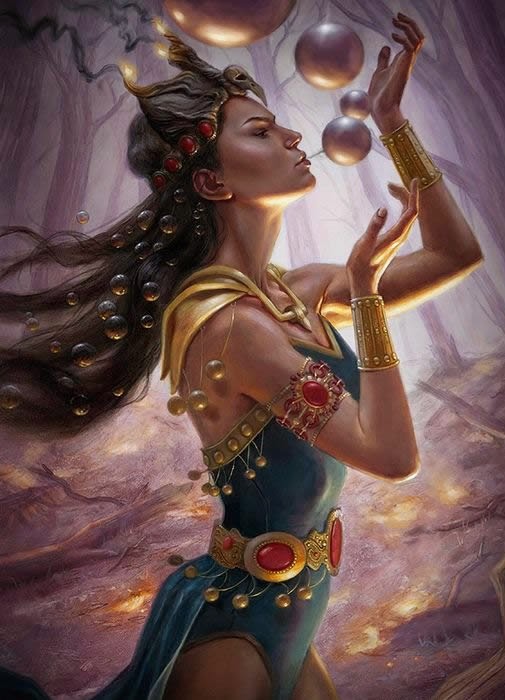 |
| Traditionalism |
“Traditionalism” was a philosophy of history and a political program developed by the Counterrevolutionists in France. It was ultramontane in politics and antiindividualistic in epistemology and ethics.
It was the common belief of both those who favored the French Revolution and those who opposed it that the revolution was prepared by the philosophes. Voltaire and Jean-Jacques Rousseau were invoked by both parties as having been either the initiators of much-needed reforms or the corrupters of youth. The intellectual differences among the philosophes were minimized.
The Revolutionary Party believed that Voltaire and Rousseau were the leaders of two schools of thought, both of which removed the seat of authority from the group—society or the nation or the church—to the individual, and that the two schools disagreed only on the question of whether authority was vested in the reason or in feeling (sentiment). The Voltairians were said to be individualistic rationalists; the Rousseauists individualistic sentimentalists.
 |
| Voltairians |
In short, the Voltairians were supposed to believe that any individual, by the use of reason alone, could reach all attainable truth in any field; the Rousseauists, that one had only to look into his “heart” to achieve the same result. Oversimplified as this was as history, it was common belief.
The philosophy of Comte Joseph de Maistre (1753–1821) and of his alter ego, Vicomte de Bonald (1754–1840), was developed in conscious reaction to individualism. De Maistre and Bonald were rationalistic, but they maintained that the reason to be trusted was that of the group, not that of the individual.
The common reason, like the common sense, was lodged in a superindividual being, manifested in tradition and expressed in language. The superindividual being was the Roman Catholic Church, the authority of which was binding not only on its avowed members, but on all people. The church alone had direct access to the source of truth (God) and for 1,800 years had remained steadfast and unshaken in its dogmas.
 |
| simple conversion |
Since truth must be one and everlasting, the traditionalists were persuaded by a simple conversion of the proposition that where there was a single and everlasting set of ideas, it must be true. “No human institution has lasted eighteen centuries,” de Maistre wrote in Du Pape. Therefore, he inferred, the church must be superhuman or divine.
Human nature can be understood only by seeing humanity as an integral part of the church. The human individual is but a fragment of a whole. He is completely dependent on society for his bodily welfare and even for his thoughts, for his thoughts are internal speech, and no language is either that of a single individual or created by an individual.
Combating the theory that language was invented, de Maistre argued, as Rousseau and Thomas Reid had done before him, that thought is required for invention and language must therefore have existed before it could be invented.
 |
| emotions and sensations |
Language is the thought of the race expressing itself. It is also rational—we cannot express emotions and sensations linguistically. We speak our thoughts; we speak of our feelings and emotions.
Since the traditionalists were French, they turned to the history of France for their evidence and found it in the antiquity of the Capetian dynasty, founded, in their view, by Louis the Pious in the ninth century, if not by Charlemagne; in the genesis of French from Latin; and in the primacy of Catholicism in France, which was converted from paganism by Dionysius the Areopagite, the first pagan to be converted by St. Paul.
The supremacy of the pope in both religious and secular affairs was emphasized by de Maistre.Although there might be two swords, the spiritual and the temporal, the latter was wielded, in the language of Boniface VIII, at the pleasure and sufferance of the priest (ad nutum et patientiam sacerdotis).
 |
| Hugues Félicité Robert de Lamennais |
This factor of the traditionalists’ teachings led to ultramontanism, which, when vigorously preached by Hugues Félicité Robert de Lamennais (1782–1854) in the nineteenth century, was condemned by the pope.
Another type of traditionalism was espoused by Pierre-Simon Ballanche (1776–1847). In his major work, Palingénésie sociale (1827–1829), Ballanche developed a philosophy of history based on man’s fall from primordial innocence.
However, he maintained that there could be steady progress toward universal rehabilitation. In upholding the possibility of human progress, Ballanche differed from Bonald and de Maistre, for whom time and change, variety and multiplicity, were inherently evil.
 |
| ultimate perfectionn |
To Ballanche they were the only condition of redemption. He was convinced of the ultimate perfection of humankind, at which time all that is potential in the human essence would be realized. All men were to be rehabilitated, regardless of their present merits.
There was no eternal hell. Even religion would progress, in that God would reveal its truths bit by bit as humankind became worthy of receiving them. Each man would have to make himself worthy by listening to his heart, an appeal to personal interpretation that was considered heretical.
Although Ballanche agreed with Bonald and de Maistre that the understanding of history could come only from seeing the designs of God in every historical event, he did not believe that government should be theocratic.
 |
| separate powers |
On the contrary, the two swords must be wielded by two separate powers. The secular power, however, should not be in the hands of the people; they should be permitted to voice their aspirations only so that the sovereign might accept them.
It remained for Lamennais to carry traditionalism to its logical conclusion. Beginning with the strictest form of ultramontanism, he developed into a heresiarch, never realizing that he was moving away from the course of reason. If the pope was the head of the church and the church was superior to the state, then the pope should be recognized as the one sovereign and autonomous being on Earth.
The sole test of certitude, Lamennais maintained, lay in the racial reason, and this collective reason was tradition. Tradition gives society its unity, and its unity fosters civilization. However, society to Lamennais was not France; it was humanity.
 |
| national boundaries |
And since civilization was Catholicism, national boundaries were artificial and should be eliminated except for practical purposes. The common sense of humankind, in which he believed as did the Stoics, was nothing that could be substantiated by the reason. It was the reason. One must submit to tradition in order to avoid the divisive effects of sectarianism.
When the state put obstacles in the way of such submission, then rebellion was legitimate. However, this involved freedom of conscience, of the press, and of education, if it was to be practiced. It was at this point that Gregory XVI in his encyclical Mirari Vos intervened to silence Lamennais.
 |
| Vatican Council |
Traditionalism as a body of doctrine was condemned in 1855 in a decretal against Augustine Bonnetty (1798–1879), a priest. The theory directly condemned was the fidéisme of the Abbé Bautain (1796–1867), which Bautain had retracted in 1840.
Since the identity of reason, common sense, and tradition demanded prerational assertions, faith seemed to be the only thing left to which the traditionalist might appeal. However, this raised faith to a position above that of reason, contrary to the doctrine of the church. The rationalistic position of the church was confirmed at the third session of the Vatican Council in 1870.
 |
| body of doctrine |